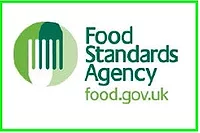New USDA Report Breaks Down U.S. Food Recalls 2004-2013

The U.S. Department of Agriculture’s (USDA's) Economic Research Service has released a new report entitled Trends in Food Recalls 2004-2013. The report, according to the abstract, identifies trends, patterns, and outliers of food product recalls in the U.S. from January 1, 2004 through December 31, 2013. The number of food product recalls has increased significantly over the past couple of decades. USDA’s report examines the products and risks that may have contributed to this increase.
There are four factors in the report that were analyzed:
- What types of foods were recalled
- Reasons for initiating those recalls
- Severity of the risks posed by the recalled products
- Geographic distribution of the recalled products
What researchers found is that food recalls increased amongst several major food categories:
- Grains
- Animal products
- Prepared foods/meals
Food recalls also increased across all three risk severity classes, and occurred more frequently in highly populated states. And, as we reported in 2016, 2017 and 2018 in our own annual food recall analysis, undeclared allergens were a leading cause of food product recalls. USDA’s analysis found that the number of undeclared allergen recalls nearly doubled from 2004 to 2013.
What else did the study find?
- Average number of food recalls between 2004 and 2008: 304 per year
- Average number of food recalls between 2009 and 2013: 676 per year
USDA attributes this increase to a few different factors. First, there was an increase in the volume of food sold to the U.S. during the time span analyzed, which would statistically and expectedly equate to more recalls. Simultaneously, pathogen and risk detection technology has gotten better, so contamination that couldn’t be detected 10+ years ago is easier to detect now. And, of course, there’s been an increase of regulatory oversight and enforcement, not to mention that Congress passed two major food policy laws: the Food Allergen Labeling and Consumer Protection Act (FALCPA) and the Food Safety Modernization Act.
What food categories experienced the most recalls?
- 11.9% = prepared foods and meals (excluding soup)
- 10.9% = nuts, seeds, and nut products
- 9% = baked goods (excluding packaged baked goods)
- 8.4% = grains and grain products (excluding baked goods)
- 7.9% = candy products
- 5% = sauces, condiments, and dressings
For each of these foods (except nut products), the most common reason for initiating the recall was failure to declare major allergens. The most common reason for recalls of nut products was possible Salmonella contamination. While the number of food product recalls increased across every food category, the increase was statistically significant only for grain products, animal products, and prepared foods and meals.
Recalls by risk type
- 41% = pathogen contamination (Shiga toxin-producing Escherichia coli, Salmonella, etc.)
- 27.4% = undeclared allergens
While the number of recalls due to pathogen contamination did not increase significantly during this decade, the number of allergen recalls nearly doubled. The passage of FALCPA likely played a major role in the growing number of undeclared allergen recalls.
Looking for quick answers on food safety topics?
Try Ask FSM, our new smart AI search tool.
Ask FSM →
See USDA’s official Trends in Food Recalls report on ERS.USDA.gov.
Sign up for Food Safety Magazine’s bi-weekly emails!
Subscribe to our podcast: Food Safety Matters!








